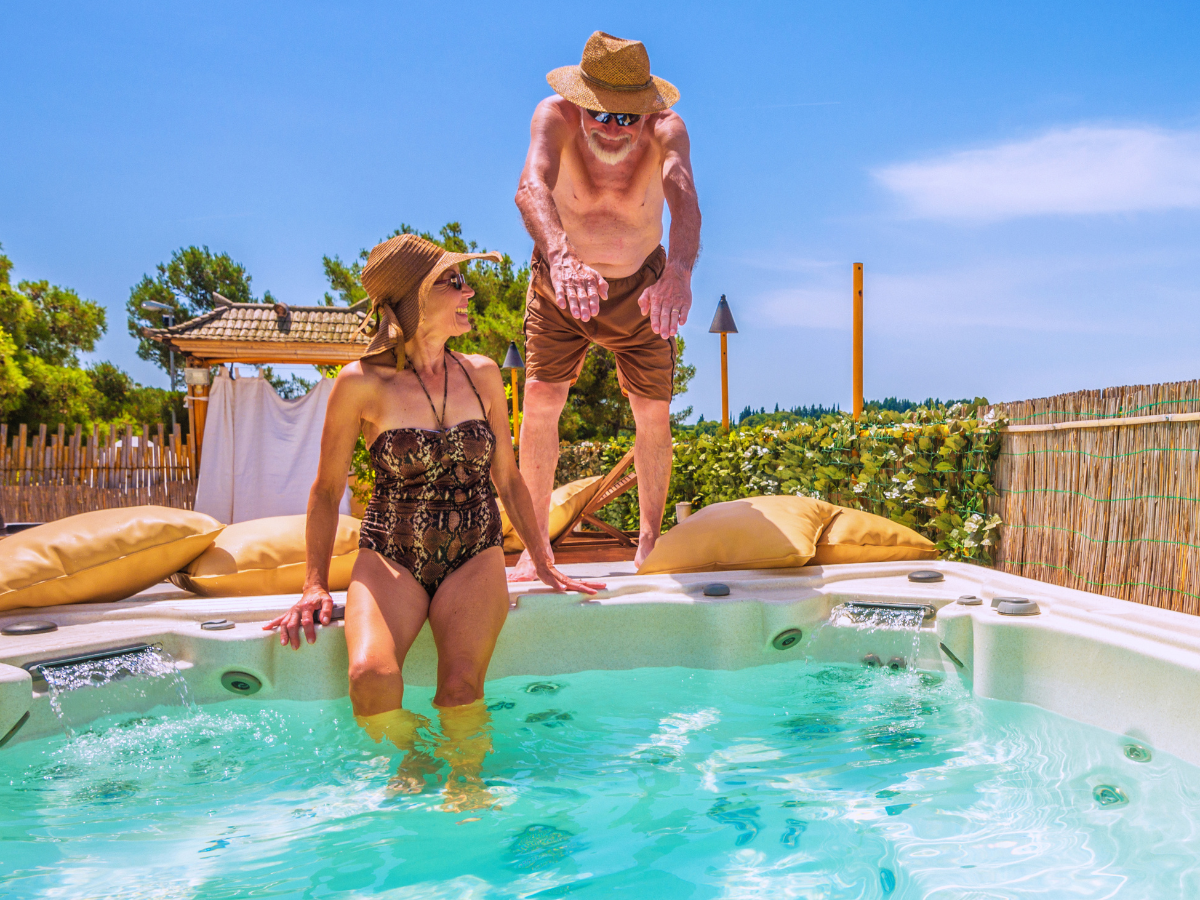The winter season officially begins on December 21st! However, Calgarians never have to wait until then to experience winter weather. With frigid temperatures and inevitable snowfall commonplace in our wonderful city, it’s wise to be on the lookout for potential outdoor dangers long before winter arrives. Being cautious is an especially important responsibility of older adults. In particular, those with balance, mobility and vision issues need to be very careful while navigating the outdoors.
Here are six steps to keeping seniors super safe throughout the snowy winter season:
1. Layer up.
We’re sorry to have to state something so obvious. Naturally, we should all dress warmly during the cold winter months. However, it’s worth reminding older adults that they are at greater risk of the ill effects of frigid weather.
“The older we get, the faster our bodies lose heat and the less likely we are to be aware of how cold we are,” explains Ottawa’s Carefor.ca, “As a result, seniors are more at risk of frostbite and hypothermia. Hypothermia occurs when your body temperature gets under 95 degrees Fahrenheit, and can trigger health problems such as heart attack, kidney problems and liver damage.”
2. Walk like a penguin.
Canada’s winters are synonymous with treacherous icy paths and snowy sidewalks. For seniors, this spells danger. Particularly for those with balance and mobility issues, navigating these slippery surfaces can pose a significant risk of falls. To mitigate this risk, opt for footwear with good traction, such as boots with rubber soles or ice grips. Take smaller steps and use walking aids if necessary.
In fact, BCGuidelines.ca encourages us all to “walk like a penguin” to prevent falls on snow and ice. This means moving slowly and taking very small steps. “Keep your feet pointed outward to allow for wider base of support and your knees slightly bent and relaxed to lower your centre of gravity,” instructs their patient handout, “Your hands should be kept out to your side and out of your pockets for balance like a penguin’s wings.”
3. Use extreme caution while driving.
Practicing road safety is vital all year round. However, navigating the roads during winter can be especially challenging, no matter your age. For older adults, reduced visibility, icy roads and snow-covered surfaces are particularly dangerous. Naturally, they increase the risk of accidents. If driving, ensure that your vehicle is winter-ready with appropriate tires. Always maintain a safe distance behind other cars on the road.
Consider limiting or avoiding driving in extreme weather conditions. Try to plan your trips during daylight hours when possible. If you are walking near roads, be extra cautious and use designated crosswalks. Remain vigilant of vehicles that might have limited braking abilities on icy surfaces.
“Older people are sometimes forgetful, so remind your senior to avoid driving on wet or icy roadways, bridges and overpasses,” advises Brian Perruccio of HomeChoice Home Care, “If they do drive in bad weather, help them choose the safest route. And, gently remind them to never pass through standing or moving water if they aren’t 100% sure what lies beneath.”
4. Plan your outdoor activities during the daylight hours.
Are you a fan of turning the clocks back an hour in November? We’re not! What is there to like about dark skies at 5:00 p.m.? The shorter days of winter means limited daylight hours for outdoor activities. For seniors with vision impairments, this only makes things more difficult in the evening. The combination of reduced visibility due to shorter days and potentially adverse weather conditions can be disorienting.
Be sure to plan any outdoor activities during daylight hours, preferably when paths are clear and well-lit. If venturing out in low light or at night is necessary, wear reflective clothing or gear to enhance visibility and carry a flashlight to illuminate your path. Of course, it’s always a good idea to plan fun indoor activities during the winter.
“Scandinavian nations, such as Denmark, which endure some of the longest and bleakest winters on the planet, embrace the concept of hygge,” informs health and wellness expert, Julianna McLeod of All Seniors Care, “The idea is to get cozy and spend time inside with friends and family. Create a sensory kind of pleasantness in your space.”
5. Stay informed about weather forecasts.
We don’t always recommend watching news broadcasts. After all, we can only take so much bad news. The presence of inclement weather, however, is information we all need. In addition to being on top of current weather forecasts, seniors should stay connected with friends, family members and neighbours. This is particularly crucial for those who live alone. Establish a support network and communicate your outdoor plans to someone you trust.
“Plan with your siblings and other family members for someone to follow up with your elderly loved one every few hours when they’re homebound due to a storm,” instructs Perruccio, “Take turns checking in with your loved one via: Facetime or Skype; phone calls; stopping by the home; (and) asking the local police to do wellness checks, if they have time.”
6. Install a wheelchair lift.
Does your elderly loved one require the use of a wheelchair or other mobility solution? If so, it’s wise to ensure easy access to and from your home. This may involve installing a wheelchair lift outside of your home’s front entrance. Also known as a porch lift or vertical platform lift, this is a great solution for keeping seniors safe all year long.
A basic porch lift consists of a single, open platform and drive mechanism that controls the up-and-down movement of the lift. The outdoor wheelchair lifts offered by Advantage Home Health Solutions are engineered to withstand a wide range of weather conditions, from extremely hot, dry temperatures to blistering cold ones.
Our team always ensures that you have the complete picture to make an informed decision. You will always know all of the possible options so you can choose which solution is best for you. To learn more about our wheelchair lifts, please don’t hesitate to give us a call at 403-460-5438. You may also email us by filling out the form on our Contact page!



